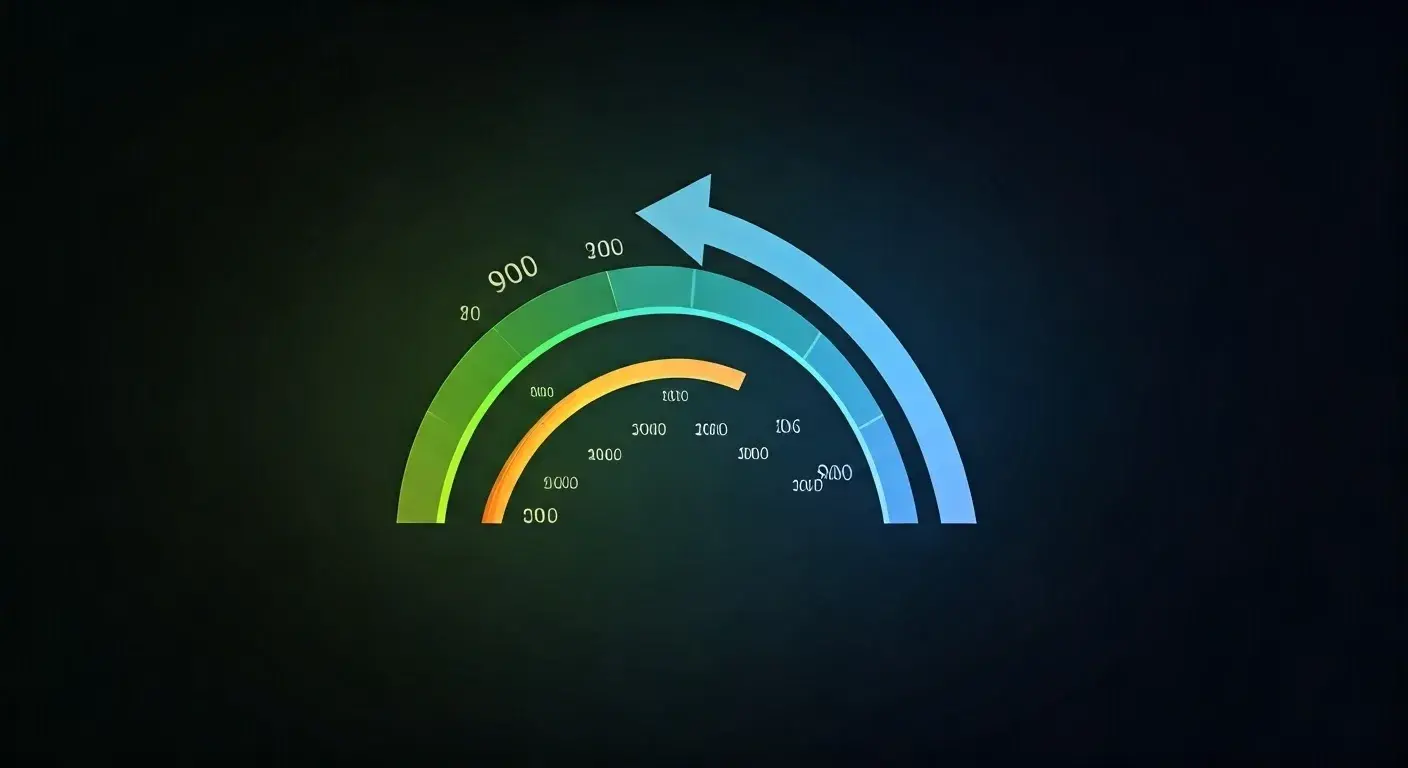-
Posted on: 17 Jul 2024
-
A credit score of 500 places you firmly in the "bad credit" range. This can significantly impact your ability to secure loans, rent an apartment, or even get approved for certain jobs. However, the good news is that recovery is absolutely possible. It requires dedication, patience, and a strategic approach. This comprehensive guide will outline the steps you can take to improve your credit score and regain financial stability.
Understanding Your 500 Credit Score
Before diving into the recovery process, it's crucial to understand what contributes to a low credit score. The most common credit scoring model, FICO, considers several factors:
- Payment History (35%): This is the most significant factor. Late payments, missed payments, and defaults have a substantial negative impact.
- Amounts Owed (30%): Also known as credit utilization, this refers to the amount of credit you're using compared to your available credit limits. High credit utilization (using a large portion of your available credit) can lower your score.
- Length of Credit History (15%): A longer credit history generally leads to a higher score.
- Credit Mix (10%): Having a variety of credit accounts (e.g., credit cards, installment loans, mortgages) can positively influence your score, but only if managed responsibly.
- New Credit (10%): Opening multiple new accounts in a short period can lower your score, especially if you have a limited credit history.
Therefore, a 500 credit score likely indicates one or more of the following:
- Multiple late payments or defaults.
- High credit utilization on existing credit cards.
- A limited credit history.
- Recent applications for multiple credit accounts.
- Collections accounts.
- Potentially, a bankruptcy or foreclosure.
Why a 500 Credit Score Matters
Living with a low credit score can have far-reaching consequences:
- Higher Interest Rates: Lenders will charge significantly higher interest rates on loans and credit cards to compensate for the perceived risk. This can lead to substantial long-term costs.
- Difficulty Obtaining Credit: You may be denied for loans, credit cards, and even store credit.
- Higher Insurance Premiums: In some states, insurance companies use credit scores to determine premiums. A lower score can mean higher premiums.
- Difficulty Renting an Apartment: Landlords often check credit scores as part of the application process. A low score may make it difficult to secure housing.
- Employment Challenges: Some employers check credit scores as part of the hiring process, particularly for positions involving financial responsibility.
- Difficulty Securing Utilities: Utility companies may require a higher deposit or deny service altogether to individuals with low credit scores.
Steps to Rebuild Your Credit From 500
Rebuilding your credit score from 500 is a marathon, not a sprint. Here's a detailed plan to guide you through the process:
1. Obtain Your Credit Reports
The first step is to obtain copies of your credit reports from all three major credit bureaus: Equifax, Experian, and TransUnion. You can get a free copy of your credit report from each bureau annually at AnnualCreditReport.com.
2. Review Your Credit Reports for Errors
Carefully review each credit report for errors, inaccuracies, and outdated information. Common errors include:
- Incorrect account balances.
- Accounts that don't belong to you.
- Late payments that were not actually late.
- Closed accounts reported as open.
- Duplicate accounts.
If you find any errors, dispute them with the credit bureau reporting the inaccurate information. You can typically file a dispute online, by mail, or by phone. The credit bureau is required to investigate the dispute within 30 days. If the information is found to be inaccurate, it will be corrected or removed from your credit report.
3. Create a Budget and Pay Down Debt
Creating a realistic budget is essential for managing your finances and paying down debt. Track your income and expenses to identify areas where you can cut back. Prioritize paying down high-interest debt, such as credit card balances. Consider using the debt snowball or debt avalanche method:
- Debt Snowball: Focus on paying off the smallest debt first, regardless of interest rate. This provides quick wins and motivation.
- Debt Avalanche: Focus on paying off the debt with the highest interest rate first. This saves you the most money in the long run.
4. Bring Delinquent Accounts Current
If you have any past-due accounts, bring them current as quickly as possible. While the negative impact of past late payments will remain on your credit report for seven years, bringing the account current will prevent further damage. Contact creditors to explore payment plans or hardship programs if you're struggling to make payments.
5. Consider a Secured Credit Card
A secured credit card is a great tool for rebuilding credit. You'll deposit cash collateral with the issuer, which serves as your credit limit. Use the card responsibly by making small purchases and paying your balance in full and on time each month. After a period of responsible use (typically 6-12 months), the issuer may convert your secured card to an unsecured card and return your deposit.
6. Explore Credit-Builder Loans
Credit-builder loans are designed to help individuals with limited or bad credit establish a positive payment history. Typically, the loan proceeds are held in an account until you've made all the payments. Once the loan is paid off, you receive the funds, and the lender reports your payment history to the credit bureaus.
7. Become an Authorized User on a Credit Card
If you have a friend or family member with a good credit history and a credit card in good standing, ask if you can become an authorized user on their account. As an authorized user, the account's payment history will be reported to your credit report, which can help boost your score. However, it's important to ensure that the primary cardholder manages the account responsibly, as any negative activity will also affect your credit.
8. Monitor Your Credit Score Regularly
Track your progress by monitoring your credit score regularly. Many credit card issuers and financial institutions offer free credit score monitoring services. This will help you see how your efforts are impacting your score and identify any potential issues that need to be addressed.
9. Be Patient and Persistent
Rebuilding credit takes time and effort. Don't get discouraged if you don't see results immediately. Stay consistent with your efforts, and over time, your credit score will gradually improve. Avoid making any major financial decisions that could negatively impact your credit, such as taking out a new loan or opening multiple credit accounts in a short period.
Common Mistakes to Avoid
While you're working to rebuild your credit, avoid these common mistakes:
- Ignoring Your Credit Report: Regularly checking your credit report is crucial for identifying errors and monitoring your progress.
- Applying for Too Much Credit: Applying for multiple credit cards or loans in a short period can lower your score.
- Closing Old Credit Accounts: Closing old credit accounts can reduce your available credit and increase your credit utilization, potentially lowering your score.
- Paying Late or Missing Payments: Late payments are one of the most significant factors that negatively impact your credit score.
- Maxing Out Credit Cards: Using a large portion of your available credit can significantly lower your score.
- Ignoring Debt Collectors: Ignoring debt collectors won't make the debt disappear. It can lead to lawsuits and wage garnishment.
- Falling for Credit Repair Scams: Be wary of companies that promise to quickly fix your credit for a fee. These are often scams. Focus on legitimate credit repair strategies, such as disputing errors and paying down debt.
How Long Will It Take to Recover?
The time it takes to recover from a 500 credit score varies depending on the severity of your credit issues and the steps you take to improve your score. In general, it can take anywhere from 6 months to 2 years to see significant improvement. Consistent effort and responsible financial habits are key to accelerating the recovery process.
Here's a general timeline:
- Within 6 Months: You can start to see some improvement by correcting errors on your credit report, paying down debt, and using a secured credit card responsibly.
- Within 1 Year: With consistent effort, you can significantly improve your credit score and potentially qualify for better interest rates on loans and credit cards.
- Within 2 Years: You may be able to reach a "good" or even "excellent" credit score, depending on the severity of your past credit issues.
Resources for Credit Improvement
There are several resources available to help you rebuild your credit:
- Nonprofit Credit Counseling Agencies: These agencies offer free or low-cost credit counseling services to help you create a budget, manage debt, and improve your credit score. The National Foundation for Credit Counseling (NFCC) and the Association for Financial Counseling & Planning Education (AFCPE) are reputable organizations.
- Government Agencies: The Federal Trade Commission (FTC) and the Consumer Financial Protection Bureau (CFPB) provide valuable information and resources on credit repair, debt management, and consumer rights.
- Online Resources: Numerous websites and blogs offer tips and advice on credit improvement. However, be sure to verify the credibility of the information before acting on it.











